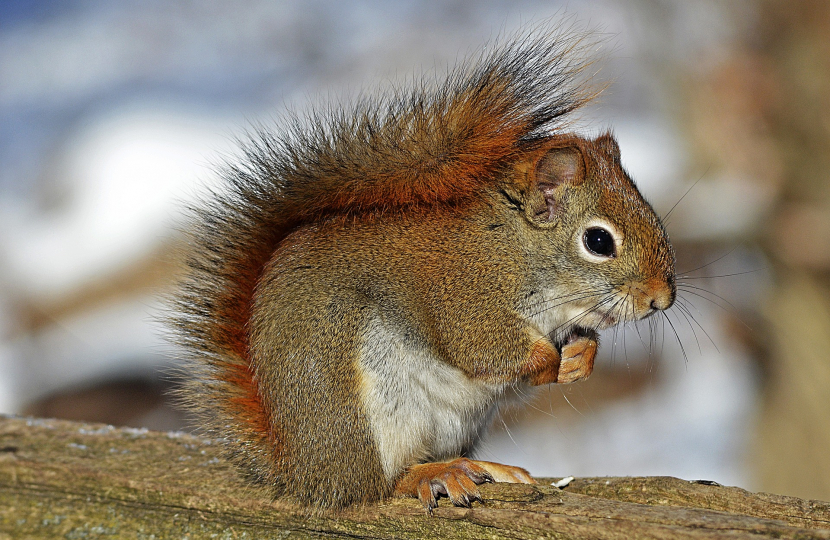
January 21st was National Squirrel Appreciation Day, a day to learn about and celebrate the world’s cutest rodents
There are two species of squirrel in the UK; red squirrels and grey squirrels. Red squirrels are our native species and have lived in the UK for around 10,000 years, Grey squirrels were introduced to the UK from North America by the Victorians in the 1800s, the first record of them escaping and establishing a wild population is 1876.
Grey squirrels are a familiar sight for many people across large parts of the UK and are often seen in parks and gardens, whilst the range of our native red squirrels is now limited to certain areas of the UK, such as Anglesey, parts of northern England and Scotland. In many cases they have retreated to wilder, remote locations. Unfortunately, without conservation management, red squirrels could become extinct.
The grey squirrel is the main reason for the decline of the red squirrel, they must be kept apart as the two species cannot live together long term. Habitat loss has also contributed to the red squirrel’s decline. This occurs when areas of woodland are destroyed or become separated by development and changing land-use. This leads to isolated areas which cannot sustain viable populations of wildlife, including red squirrels in some places.
In 2016 I became the Red Squirrel Species Champion in the Senedd and since that time have repeatedly highlighted the threat they are under and the need to protect them.
In the late 1990s, the Clocaenog forest in Denbighshire appeared to be the home of what was the largest population of red squirrels in the country. But by 2011, it became quite clear that the numbers had declined significantly.
Since that time there has been much conservation work carried out in North Wales to boost the population of the endangered species and in 2020 I used the first ever Senedd debate on red squirrels to highlight this work.
I said: “I’m pleased to say that conservation efforts that were led by Natural Resources Wales and supported by Red Squirrels Trust Wales have seen great success in recent years. Through careful forest management and by the releasing of captive-bred red squirrels into the area to bolster the indigenous population, we’ve seen a slow and steady recovery in the numbers of reds in the area. This work has been helped along by the Clocaenog Red Squirrels Trust. It has forged a strong relationship and partnership with NRW and the Red Squirrels Trust Wales in order to turn the tide on the fortunes of these wonderful animals.”
But the biggest triumph, in my opinion, for any conservation effort of any animal in Wales, has been on the island of Anglesey. Because, thanks to its status as an island, an ambitious plan to remove grey squirrels was hatched, and, by 2015, it was announced that Anglesey was a grey squirrel-free zone. The population of Red Squirrels on Anglesey is now so large that a number of them have even escaped the island, crossing the Menai straits, to form a small population in the Bangor area.
In my debate, I also applauded the Welsh Mountain Zoo’s efforts to protect the species. Since 1989, the zoo embarked upon its longest running conservation project, which, to this day, is dedicated to the conservation of red squirrels across the British isles.
I commend all the great work that has been carried out in North Wales to protect the red squirrel and thank all those involved in such work. However, we cannot become complacent and must continue doing all we can to protect red squirrels. Without the appropriate action to protect our wildlife here in Wales, we risk causing irreparable damage to our natural heritage.



